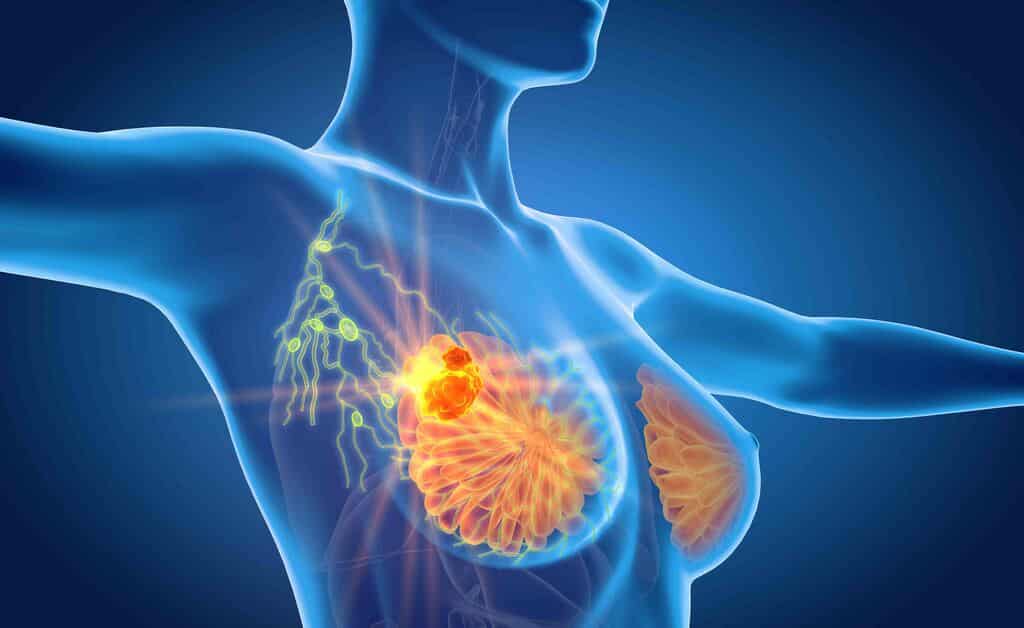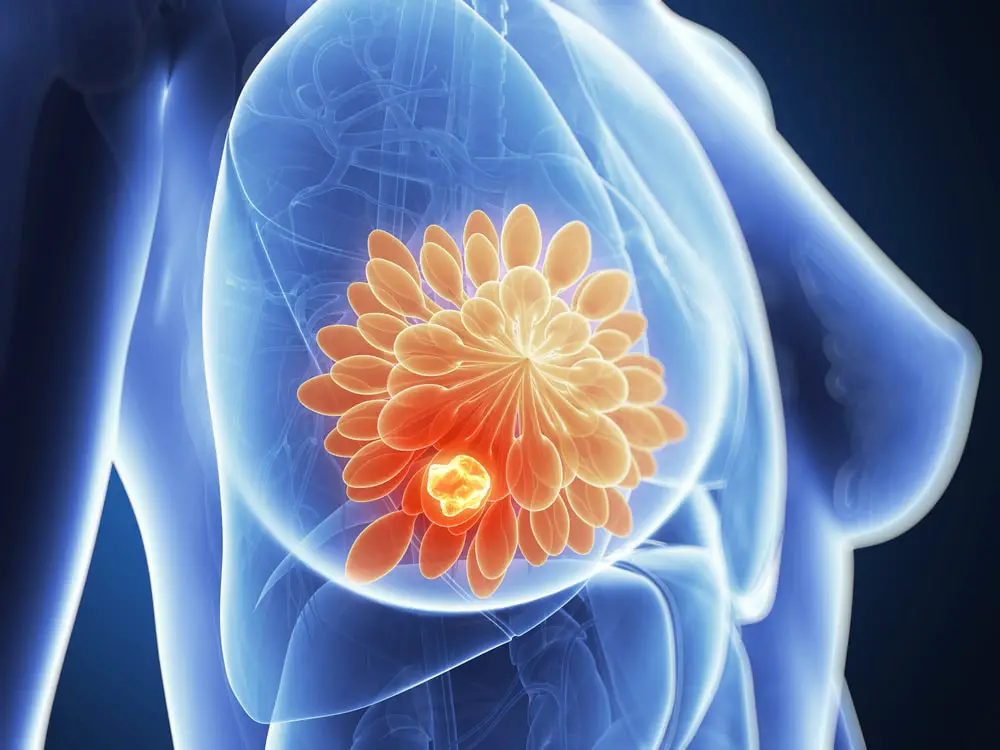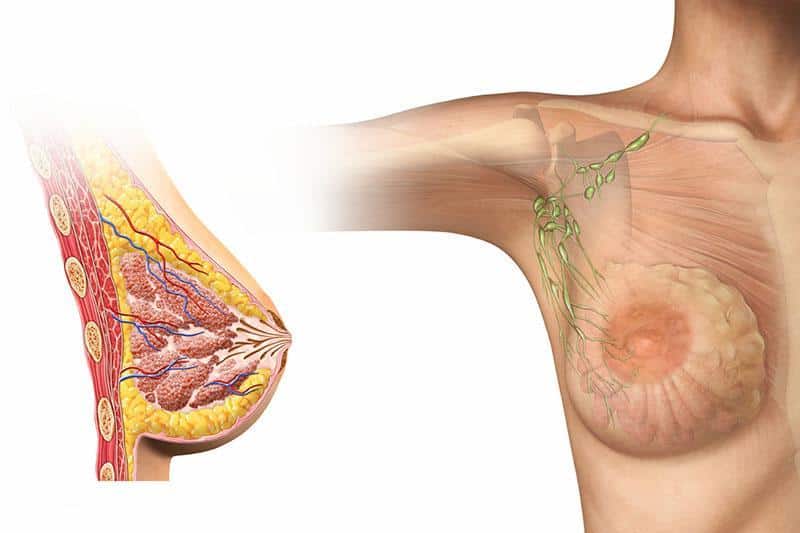Triple negative breast cancer (TNBC) is difficult to treat due to its aggressive nature and resistance to chemotherapy. Exciting research published by the University of Southern Denmark sheds light on the mechanisms driving this resistance and gives hope for better treatment for patients in the future.
Aggressive breast cancer: a better treatment for patients of the future
Two separate studies, led by a team of researchers from the Department of Molecular Medicine, published in the journals npj Precision Oncology and EMBO Molecular Medicine, have deepened our understanding of chemotherapy resistance in TNBC and found new ways to segment patients and improve treatment by It.
Professor Vijay Tiwari, leader of the research team, says: “Our findings have identified specific groups of cells in the tumor that drive resistance to chemotherapy and have further decoded the underlying molecular program that confers this behaviour, including signaling and of survival with cancer”. niche.”
“Additionally, the genes expressed by these cells offer a best-in-class biomarker for predicting chemotherapy response and therapy targets using existing FDA-approved drugs. This is a truly exciting development with the potential to significantly improve the lives of patients with TNBC.”
In the first study, researchers discovered previously unknown cell types in TNBC tumors. It is precisely these cells that show signs of resistance to chemotherapy. The study also identified genes that confer resistance properties to these cells.
Postdoc Mohammed Inayatullah, the lead author of this study, used advanced genomic tools combined with machine learning to make this discovery.
“We have gained a greater understanding of the mechanisms underlying drug resistance and have the potential to discover robust biomarkers for developing better treatment strategies in difficult-to-treat cancers such as TNBC,” he says.

The study also indicates potential alternative treatment options for patients with chemotherapy-resistant TNBC.
A biomarker, also known as a biological marker, refers to a quantifiable sign of a biological state or condition. Biomarkers are often evaluated and analyzed using blood, urine, or soft tissue to investigate typical biological functions, disease processes, or the body's response to medical treatments.
The second study, led by Ph.D. student Ryan Lusby, focused on unraveling the epigenetic mechanisms that drive chemoresistance in TNBC. Using data from TNBC patients, the authors clarified how a specific chemical modification on histone proteins controlled chemoresistance genes.
Epigenetics involves examining how behaviors and environmental factors induce alterations that affect genetic functionality. Unlike genetic modifications, epigenetic alterations are reversible and do not alter the DNA sequence; however, they can affect the organism's interpretation of a DNA sequence.
Histone proteins are vital components that provide structural reinforcement to chromosomes. Within each chromosome is an extensive DNA molecule that requires accommodation within the cell nucleus. This accommodation is facilitated by DNA wrapping around groups of histone proteins, thus compacting the structure of the chromosome.

“By comprehensively mapping this modification in TNBC patients, we found in our study some so-called super-enhancers that drive the expression of genes crucial for chemotherapy resistance,” says Ryan Lusby. Notably, the loss of transcription factors that occupy these super-enhancers has overcome resistance.”
This study revealed how targeting the genetic and epigenetic mechanisms underlying chemoresistance offers new avenues for therapy.
Interaction between triple-negative breast cancer and the microenvironment
Although many advances have been made in the treatment of breast cancer, for triple-negative breast cancer (TNBC) these therapies have not significantly increased overall survival. The tumor microenvironment (TME) plays an essential role in the development and control of TNBC progression. Numerous preclinical and clinical studies are underway for the treatment of patients with TNBC disease, but no effective therapies are currently available.
In their new review, researchers Karly Smrekar, Artem Belyakov, and Kideok Jin of the Albany College of Pharmacy and Health Science discuss recent advances in our understanding of TNBC, progress in defining the mechanisms of TNBC therapies, and potential therapeutic strategies to overcome the TNBC.

“Technological advances such as genomics and epigenomics have given us vast knowledge about the complexity of breast cancer. However, one thing has remained the same, the need to evaluate three scorers. These three markers; the expression of estrogen, progesterone, and HER2 are all molecular targets for treatment regimens and relied upon by physicians.
Chemotherapy is the basic treatment for patients with TNBC. However, they lack the expression of three key therapeutic markers. Lack of therapeutic markers leads to worse outcomes in TNBC,” the authors say.
A new drug target for triple-negative breast cancer
Research led by Dr. Suresh Alahari, professor of biochemistry in the Schools of Medicine and Graduate Studies at LSU Health New Orleans, reports that a combination of a new small molecule inhibitor and an FDA-approved chemotherapy drug suppresses the growth of cancer cells in the triple negative breast synergistically. The results are published in Oncogene.
After reviewing the National Cancer Institute's Diversity Set IV (a collection of compounds selected for structural diversity and potential anticancer efficacy), the research team selected the molecule, NSC33353, as a potential anticancer compound against triple-negative breast cancer (TNBC). ). They tested it on triple-negative human breast cancer cells and found that it significantly suppressed cell proliferation, migration, and invasion.
The researchers then turned their attention to using the molecule in combination. Triple-negative breast cancer cells develop resistance to doxorubicin, one of the most effective chemotherapy drugs against these tumors. The researchers demonstrated that the combination of NSC33353 and doxorubicin synergistically suppressed the growth of TNBC cells, suggesting that NSC33353 enhances the sensitivity of TNBC to doxorubicin.

More common in younger women, triple-negative breast cancer (TNBC) accounts for 15-20% of breast cancers. It is called triple negative because these tumors lack estrogen and progesterone receptors and human epidermal growth factor receptor 2 (HER2).
“Because cancer cells do not have these proteins, hormone therapy and drugs that target HER2 are not helpful,” notes Dr. Alahari.
Triple-negative breast cancer is aggressive and responds poorly to treatment, so treatment options are very limited.
“New drug discovery will be of immense help to TNBC patients,” says Dr. Alahari. “Our data indicate that the small molecule inhibitor, NSC33353, exhibits antitumor activity in TNBC cells and works synergistically with a known chemotherapeutic agent.”
A combination therapy for triple-negative breast cancer
Research led by Suresh Alahari, Ph.D., professor of biochemistry in the School of Medicine and Graduate Studies at LSU Health New Orleans, suggests that a combination of drugs already approved by the FDA for other cancers could be effective in treating triple tumors negative chemoresistant breast cancer. The results are published in Molecular Cancer.
Triple-negative breast cancer (TNBC) tumors lack estrogen receptors, progesterone receptors, and human epidermal growth factor receptor 2 (HER2). A subtype accounting for 12-55% of triple-negative breast cancers has androgen receptors (ARs). Because androgen receptors stimulate tumor cell progression in estrogen receptor-negative breast cancers, they have become a target of triple-negative breast cancer therapy.
Furthermore, as a substantial number of patients with triple-negative breast cancer develop resistance to paclitaxel, the FDA-approved chemotherapeutic agent for triple-negative breast cancer, new therapeutic approaches are needed.
Working in a mouse model and tissue from triple-negative breast cancer patients, the research team examined 133 FDA-approved drugs that have a therapeutic effect against androgen receptor cells.
They found that ceritinib, an FDA-approved drug for lung cancer, effectively inhibits the growth of androgen receptor triple-negative breast cancer cells. To improve response, they also selected enzalutamide, an androgen receptor antagonist approved by the FDA for the treatment of prostate cancer.

“We designed a novel combinatorial strategy comprising enzalutamide and ceritinib to treat AR+ TNBC tumors through dual blockade of androgen-dependent and androgen-independent AR signaling pathways,” notes Dr. Alahari.
They found that the combination of ceritinib and enzalutamide showed a strong inhibitory effect on the growth of AR+ TNBC cells. They also tested a combination of paclitaxel and ceritinib.
“The combination of paclitaxel and ceritinib showed dramatic inhibition of tumor growth compared to either drug alone,” adds Alahari. “All agents used in our study are FDA approved and therefore the proposed combination therapy will likely be useful in the clinic.”
Triple-negative breast cancer is more prevalent in younger women, those of African and Hispanic descent, and those who carry deleterious germline mutations in breast cancer susceptibility genes. This aggressive type accounts for 15-20% of all breast cancers.
Co-authors from LSU Health New Orleans included Shengli Dong, Hassan Yousefi and Samuel C. Okpechi. The team also included Isabella Van Savage, Maryl K. Wright, Bridgette M. Collins-Burow, Matthew E Burow of Tulane University, and Margarite D. Matossian of the University of Chicago.
#Aggressive #breast #cancer #potential #treatment #options